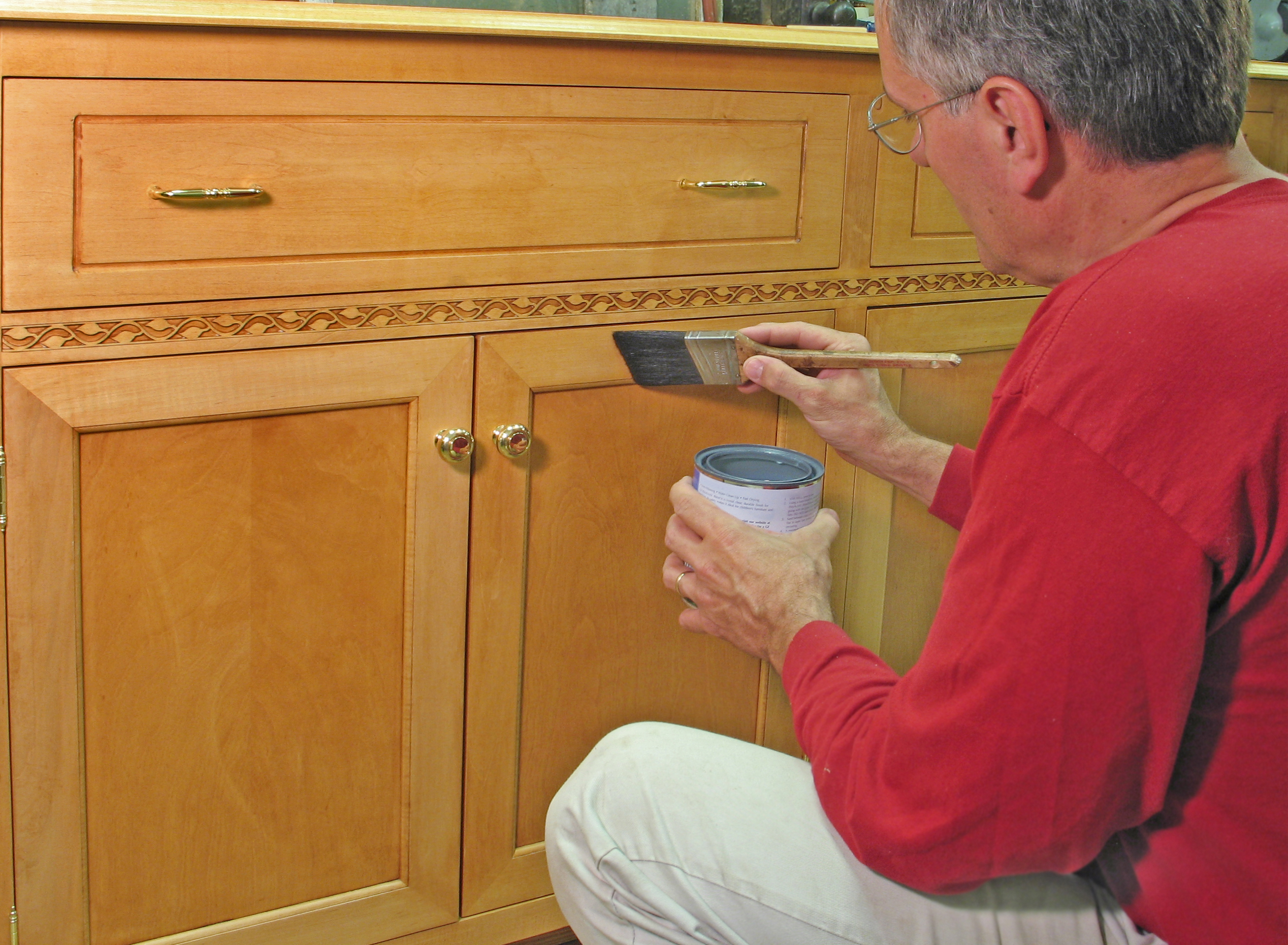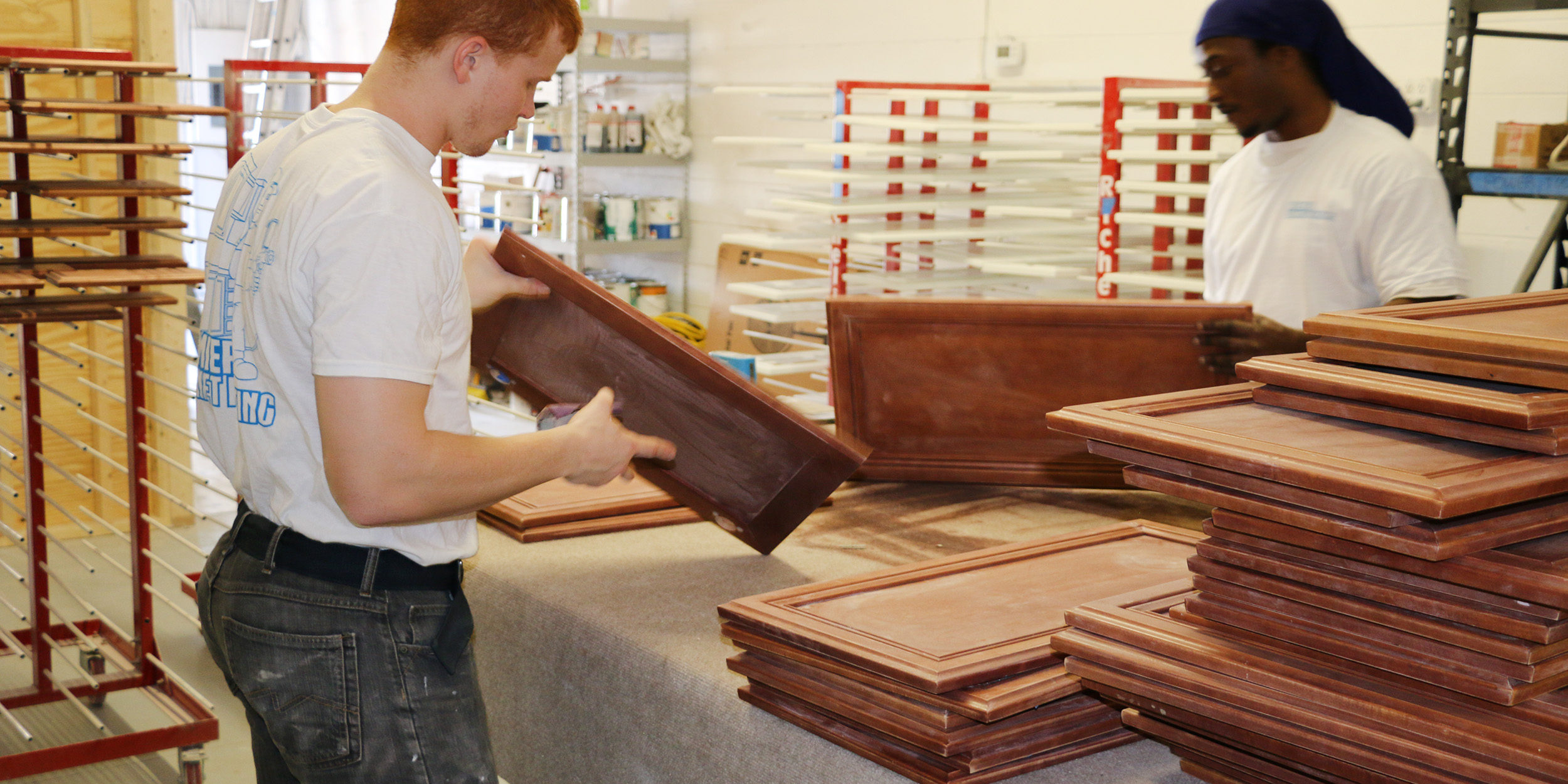Types of Professional Paint Sprayers for Cabinets

Choosing the right paint sprayer for your cabinet project is crucial for achieving a professional, smooth finish. The type of sprayer you select will significantly impact the efficiency, quality, and overall cost of your project. Several factors, including project size, budget, and desired finish, should guide your decision.
HVLP Sprayers for Cabinet Painting
HVLP (High Volume Low Pressure) sprayers are popular for their ability to minimize overspray, resulting in less paint waste and a cleaner work environment. They are relatively easy to use and maintain, making them a good option for both beginners and experienced painters. However, they are generally slower than airless sprayers, and the lower pressure might require multiple coats for full coverage, especially on darker colors.
Airless Sprayers for Cabinet Painting
Airless sprayers utilize high pressure to atomize the paint, leading to faster application and excellent coverage. This makes them ideal for large-scale projects. However, they produce more overspray than HVLP sprayers, requiring more careful preparation and cleanup. The high pressure can also lead to a rougher finish if not used correctly, and they require more specialized cleaning and maintenance.
Comparison of Professional Cabinet Paint Sprayers
The following table compares the key features of HVLP and airless sprayers:
| Feature | HVLP Sprayer | Airless Sprayer |
|---|---|---|
| Price | Generally less expensive | Generally more expensive |
| Efficiency | Slower application | Faster application |
| Ease of Use | Easier to learn and use | Requires more skill and practice |
| Overspray | Minimal overspray | Significant overspray |
| Suitability for Cabinet Sizes | Suitable for all cabinet sizes, but slower for larger projects | Ideal for large-scale projects, but can be overkill for smaller jobs |
| Maintenance | Relatively easy to clean | Requires more thorough and specialized cleaning |
Sprayer Maintenance Requirements
Proper maintenance is crucial for extending the lifespan and ensuring optimal performance of your paint sprayer. HVLP sprayers typically require cleaning with thinner or water (depending on the paint used), while airless sprayers often necessitate a more involved cleaning process involving specialized solvents and flushing the system thoroughly. Regular lubrication of moving parts is also recommended for both types. Failing to clean the sprayer properly can lead to clogged nozzles, reduced efficiency, and even damage to the equipment.
Selecting the Right Sprayer for Your Project, Professional paint sprayer for cabinets
Choosing the right paint sprayer involves considering both your project scope and budget. For smaller projects involving a few cabinets, an HVLP sprayer might be the most cost-effective and user-friendly option. For larger projects or when speed is critical, an airless sprayer may be more suitable despite the higher initial cost and increased maintenance requirements. A detailed assessment of the project’s scale and your experience level will guide you to the best choice. For example, a homeowner repainting ten kitchen cabinets might find an HVLP sprayer sufficient, whereas a professional contractor painting fifty cabinets in a new construction project would likely benefit from the speed and efficiency of an airless sprayer.
Techniques for Professional Cabinet Painting with a Sprayer: Professional Paint Sprayer For Cabinets

Achieving a flawless, professional finish on your cabinets requires more than just the right sprayer; it demands a meticulous approach to preparation and application. Mastering these techniques will transform your cabinets, resulting in a stunning and durable update to your kitchen or bathroom. This section details the crucial steps for success.
Cabinet Preparation
Thorough preparation is paramount for a superior paint job. Neglecting this stage will almost certainly lead to an uneven finish and decreased longevity. The following steps ensure a smooth, clean surface ready for paint adhesion.
- Cleaning: Begin by thoroughly cleaning the cabinet surfaces with a degreaser to remove any grease, grime, or old finishes. Pay close attention to handles, hinges, and hard-to-reach areas. Allow ample drying time before proceeding.
- Sanding: After cleaning, lightly sand the surfaces with fine-grit sandpaper (180-220 grit). This step creates a slightly rough surface, improving paint adhesion. Focus on smoothing out any imperfections or previous paint inconsistencies. Avoid aggressive sanding that could damage the cabinet’s surface.
- Priming: Applying a high-quality primer is crucial. It seals the wood, blocks stains, and provides a uniform base for the topcoat. Choose a primer designed for cabinets and apply it evenly using your chosen method (brush, roller, or sprayer). Allow the primer to dry completely according to the manufacturer’s instructions before painting.
Spray Techniques for Even Coverage
The key to a professional spray finish lies in consistent technique and controlled application. Overspray and runs are common issues, but preventable with proper technique.
Professional paint sprayer for cabinets – Maintain a consistent distance (typically 6-8 inches) between the sprayer nozzle and the cabinet surface. Overlapping each spray pass by approximately 50% ensures complete coverage and prevents streaks. Use smooth, even strokes, avoiding sudden movements or hesitations. For vertical surfaces, spray from top to bottom; for horizontal surfaces, spray from left to right. Keep the sprayer moving constantly to avoid build-up. Practice on a scrap piece of wood to get a feel for the sprayer and your technique before starting on the cabinets.
Efficient Cabinet Painting Workflow
A structured workflow maximizes efficiency and minimizes wasted time and materials. Planning your approach ensures a smooth, professional finish.
Begin by masking off areas you don’t want to be painted, such as countertops and hardware. Work in sections, applying thin, even coats. Allow each coat to dry completely before applying the next (typically 2-4 hours depending on the paint and environmental conditions). Multiple thin coats are always better than one thick coat, which can lead to runs and drips. For optimal results, apply at least two coats of paint. Consider applying a final clear coat for added protection and shine.
Handling Tricky Areas
Corners and edges present unique challenges when spray painting. Specific techniques are necessary to achieve a clean, professional finish in these areas.
Corners: To paint inside corners, use a slightly lower pressure setting on your sprayer. Use short, controlled bursts of spray to avoid overspray onto adjacent surfaces. It might be necessary to use a brush or small roller to touch up any missed areas after spraying. Edges: For sharp edges, use a light touch and maintain a very slight angle to the edge, directing the spray parallel to the edge. Multiple light coats are crucial to prevent build-up and runs on the edges. Use masking tape to protect adjacent surfaces if necessary. Remember to always test your techniques on scrap wood before working on your cabinets.
Choosing Paint and Supplies for Professional Cabinet Finishes

Selecting the right paint and supplies is paramount to achieving a durable and beautiful finish on your cabinetry. The choices you make will directly impact the longevity of your work and the overall professional appearance of the project. Careful consideration of paint type, primer selection, and supplementary materials is essential for a successful outcome.
Paint Selection for Cabinetry
The choice between latex and oil-based paints for cabinets involves weighing several factors. Both offer distinct advantages and disadvantages. A thorough understanding of these differences will guide you toward the best option for your specific project and desired outcome.
- Latex Paints: Generally preferred for their ease of cleanup (water-based), lower odor, and faster drying times. However, they may not be as durable as oil-based paints in high-traffic areas or environments with extreme temperature fluctuations. Latex paints are also susceptible to yellowing over time, particularly in darker shades.
- Oil-Based Paints: Offer superior durability and a harder, more resistant finish, making them ideal for areas subjected to frequent wear and tear. They are less prone to yellowing and provide excellent protection against moisture. However, oil-based paints require solvents for cleanup, have a stronger odor, and take longer to dry.
- Alkyd Paints: These paints offer a balance between the properties of latex and oil-based paints. They dry faster than oil-based paints, are easier to clean up than oil-based paints (though not as easy as latex), and provide good durability and a smooth finish. Alkyd paints are a popular choice for cabinet refinishing due to this balance.
Primer Application for Optimal Adhesion
Applying a high-quality primer is a crucial step that shouldn’t be overlooked. It creates a uniform surface, ensuring optimal adhesion of the topcoat paint and improving the overall finish. A well-primed surface prevents the wood grain from showing through and minimizes the number of coats of paint needed. Furthermore, primer helps to seal the wood, preventing stains and odors from bleeding through the topcoat. Different primers are available for various substrates and paint types, ensuring a proper bond between the primer and the subsequent layers of paint.
Essential Supplies Beyond Paint and Sprayer
Beyond the sprayer and paint itself, several other supplies are critical for a professional finish. Careful preparation and attention to detail using these materials will contribute significantly to the overall quality of the project.
- Masking Tape: High-quality painter’s tape is essential for protecting areas that shouldn’t be painted, such as countertops, walls, and hardware. Using the correct tape prevents paint bleed and ensures clean lines.
- Drop Cloths: Protecting the floor and surrounding areas from paint overspray is crucial. Using drop cloths of sufficient size ensures a clean and organized work environment.
- Safety Equipment: This includes respirators to prevent inhalation of paint fumes, safety glasses to protect your eyes from overspray, and gloves to prevent skin irritation. Appropriate safety measures are non-negotiable for a safe and healthy working environment.
- Sandpaper and Sanding Blocks: Proper surface preparation is key to a smooth finish. Sanding between coats helps to level the surface and remove imperfections.
- Tack Cloths: Used to remove dust and debris from surfaces before painting, ensuring a smooth and even finish free of imperfections.
